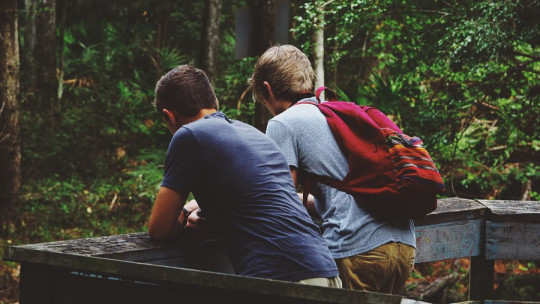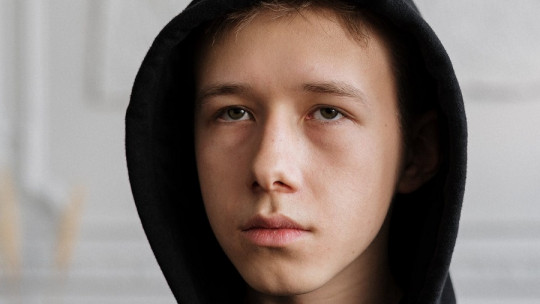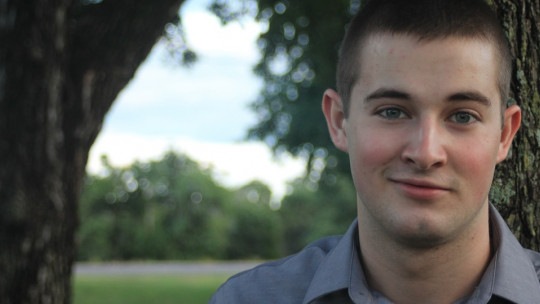
Adolescence is a convulsive and turbulent period, something that popular culture has deeply internalized. It is inevitable to think of a teenager as an emotionally unstable person who is in a deep but uncertain search for his or her identity.
That is a fairly close description of adolescence, but incomplete, since the changes that occur during puberty are varied and not only involve the emotional aspect, but also the cognitive and social aspect.
Next We are going to explore what the psychosocial changes are in adolescents and what consequences they can have on their lives Keep reading if you want to discover them.
What are the psychosocial changes in adolescence?
Psychosocial changes in adolescents are all those variations that occur in the way of thinking, feeling and relating to society that are experienced when entering the stage of puberty.
Adolescence is a period of many transformations that are evident in the physical and psychological development of the individual Because these changes are so sudden and disconcerting, adolescents often feel confused and even scared about the new experiences they are experiencing.
One of the main scholars of the changes that occur throughout development, not only in adolescence but throughout people’s lives, is the psychoanalyst Erik Erikson.
Thanks to his work we know in greater depth what happens during adolescence from a psychosocial perspective, although it is worth mentioning that his findings are quite old and that since then new discoveries have been made about this stage.
Below we are going to talk in depth about the psychosocial changes that adolescents go through during this turbulent period of their lives. Generally, These changes can be divided into three broad categories: cognitive, emotional and social
1. Cognitive changes
Adolescence is the period of human development where, according to Swiss psychologist Jean Piaget’s theory of cognitive development, the last stage of his model is reached: the stage of formal operations. Arrived at this point, the adolescent acquires some advanced mental abilities, definitively separating him from childhood
One of the most notable is the ability to reason abstractly. As they approach twelve years of age, adolescents are able to reflect effectively on elements that are not found in the here and now. This natural capacity in adulthood is something that, although it does exist at previous ages, is more modest in childhood. Abstract reasoning is one of the most important abilities not only in adolescence but also in adult life.
Another of the most significant cognitive advances is the ability to use logic more accurately and independently of your desires and feelings. Before the age of twelve, children get more carried away by their emotions and have a hard time keeping a cool head and acting rationally. Once puberty arrives, cognitive abilities increase noticeably, although it may not seem like it since it also overlaps with the emotional instability typical of these ages.
Finally, it is worth mentioning that adolescents also They begin to be able to use skills such as deduction well Due to this and the other two skills that we have mentioned, it is common that in adolescence new interests begin to emerge related to aspects such as morality, ethics or what role they have in the world.
2. Emotional changes
One of the best known facts about adolescence is that hormones take control of the body, inducing a very varied mood
Added to this is the fact that the adolescent changes educational stage, going on to study at the institute, a place where interacting with other adolescents can be the scene of multiple conflicts and tensions. All of this is the perfect cocktail for the teenager’s emotions to come to the surface, feeling them in a much more pronounced way than when they were children.
Among these emotional changes we can highlight:
2.1. emotional instability
It is well known that one of the most notable features of adolescence is its multiple mood swings. The adolescent mood is very, very variable. Young people of these ages can go from one extreme to the other in a very short time
It is not strange that it happens that a boy wakes up very cheerful, then becomes a little low at mealtime and, when night comes, is thoughtful and taciturn. In other cases, mood varies over the course of days, going through sad times and happy times without any apparent significant cause.
2.2. Acquisition of empathy
Without trying to generalize too much, boys and girls tend to tend towards egocentrism. The reason for this is that they find it easy to understand and interpret the emotions of others, and put themselves in their place.
However, when adolescence arrived, Boys and girls develop some empathy, although they do not necessarily show it Most teenagers are able to understand the effects their actions have on others much more effectively than when they were children.
23. Insecurities and feelings of uncertainty
Adolescents experience puberty as a very uncertain period, both hormonally and socially and emotionally This means that, by not knowing what will happen next and not being very clear about their role in life, they have a constant feeling of insecurity.
In turn, insecurity causes changes to be perceived as more threatening and confusing than they are, which means that the child can fall into a loop of negative emotions experienced in a very intense way. Fortunately, it is a matter of time before he acquires a feeling of greater control of the situation, with insecurity fading as he matures.
3. Social changes
Finally, we can comment that adolescents go through a series of changes related to the role they have in the world and the way they interact with others. Among the most notable social changes we have:
3.1. Search for own identity
Before the age of twelve, identity is an aspect that is little considered by boys and girls. They may feel identified with labels regarding their sex, cultural or family identity, but they do not stop to think about it too much. Nevertheless, Once puberty begins, identity becomes something that is the object of much reflection on the part of the adolescent so much so that we could say that he becomes obsessed.
The adolescent tries to find himself, define who he is, build an identity that differentiates him from others, something that makes him unique. It is because of that At these ages, new experiences are tried, assuming signs of identity such as those shared by some urban tribe Generally, these behaviors are temporary and are not a problem, and over time they will shape both their personality and their own identity.
- You may be interested: “Self-concept: what is it and how is it formed?”
3.2. Desire for independence
During childhood you are completely dependent on your parents to do everything. At the beginning of adolescence this changes, as a result of the fact that the adolescent is already capable of doing more things on his or her own and, furthermore, You want to completely get rid of your dependence on your parents

It is at these ages when the desire to become a more autonomous person begins, something that is evident both by doing more things on his own and by his aggressive attitude, even arguing with his parents so that they do not spend so much time on him.
This is not something to worry about at first. It is normal for adolescents to exhibit challenging behaviors and have a fight with their parents, although if there is a serious alteration in family life, they should go to a psychologist specialized in adolescence to evaluate the possibility that there is a mental health problem or disorder.
- Related article: “Rebellion in adolescence: why it appears and what to do”
3.3. Sexual identity and orientation
One of the most relevant changes in puberty is everything that has to do with sex and intimate relationships. Hormones, as we have mentioned, take control of the body and it is almost inevitable that certain physiological reactions occur linked to a series of very powerful emotions that lead adolescents to change their interests and ways of acting, thinking a lot about sex.
Thus It is normal that it is during adolescence that one realizes what their sexuality is, since it is during this period that sexual awakening occurs. Boys and girls who are interested exclusively in people of the opposite gender will discover that they are heterosexual, while if they are interested in the same gender then they will discover that they are homosexual. If they like both boys and girls, then they are bisexual.
Although much progress has been made in terms of acceptance of sexual orientation, Nowadays, there are many gay teenagers who fear that, when they come out, they will be rejected socially and familiarly Even in the seemingly most open-minded schools, it is common for homophobic behavior to occur among classmates, attacking homosexual or bisexual boys who have not even revealed their sexuality because they still feel doubts about what attracts them.
Nor should we ignore the reality of asexual people. Unlike heterosexuals, gays and bisexuals, asexual people do not feel sexual attraction, and can be considered both the absence of sexual attraction and a variation of other orientations but in which there is no sexual desire.
Given that they are still a very little visible group, asexual adolescents, far from understanding that they are, may think that they have an arousal problem or that there is something wrong with them. For this reason, sexual education and explaining all sexual realities is so important.








